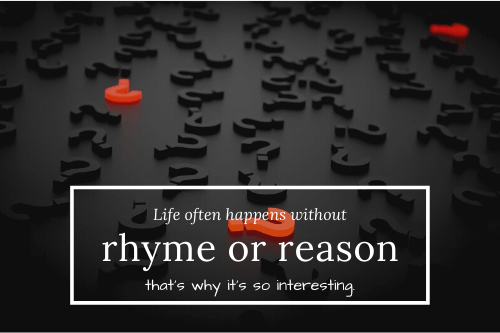
YouTube / iTunes / Spotify / Radio Public / Pocket Casts / Google Podcasts / Breaker / Overcast
Listen to ArtisanEnglish.jp posts & lesson intros here.
Phrase: Rhyme or reason
Often, looking back on history helps us make sense of events that, at the time they occurred, seemed to have no rhyme or reason.
I read on Twitter today that The Tokyo government will, when releasing the numbers of people who tested positive for COVID-19, also release the number of people tested at the same time.
Previously, they said they were ‘too busy’ to compile and publish the two numbers on the same day.
This excuse made no rhyme or reason to most people because Osaka and my local prefecture, Wakayama, had been releasing both numbers each day since the start of the pandemic.
The phrase rhyme or reason is always used in the negative, meaning that something makes no sense or has no logical explanation.
I’ll believe them for now to give them the benefit of the doubt, but eventually, the truth will come out.
Like or follow ArtisanEnglish.jp on social media.
It’s important to know that rhyme or reason is always used in the negative and often preceded by ‘without’ as in ‘He often says strange things without rhyme or reason.’
‘Have no’ sometimes comes before the phrase rhyme or reason, as in, ‘Everything he does has no rhyme or reason.’
I think if you ever spoke to my wife, she would probably say this about me, but then again, women don’t understand men, so perhaps all women would say that about the men in their lives.
Oh well, that is a discussion we’ll have to save for another day.
When foreigners first come to Japan, they find that the Japanese seem to do many things without rhyme or reason.
As an example, let’s take super expensive square watermelons.
Yes, there are square watermelons here grown in boxes to make them that way.
Huh?
People don’t even eat them.
They look at them for a while and then throw them away.
There are also individually wrapped strawberries, but we won’t get into that today either.
Flesch-Kincaid Readability Test
This post is understandable by someone with at least an 8th-grade education (age 13 – 14).
On the Flesch-Kincaid reading-ease test, this post scores 69.
The higher the score on a scale of 0 – 100, the easier the passage is to read.

